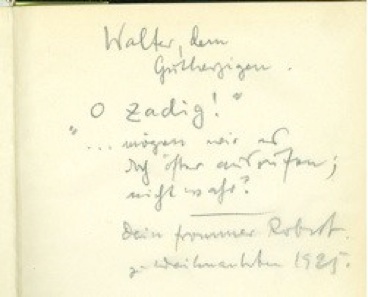walter schulze-mittendorff destiny
Destiny
1. ’A German Folksong’ in six Verses
The film 'Der müde Tod' (literally Weary Death) is made in post war Germany, in 1920. In these times the question of whether death has become weary certainly suggests itself since he had gotten so much to do during the war. The title 'Destiny', as it is called in the American version, sets a slightly different accent: Death as fate. The film has an additional subheading (omitted in the American version), ‚Ein deutsches Volkslied in sechs Versen’, meaning 'A German Folksong in Six Verses'; it is a lyrical song of death, and is a parable told in images.
-
2. Walter Schulze-Mittendorff‘s Collaboration in the Film ,Der müde Tod‘ (,Destiny‘)
"I first met Fritz Lang in 1920/21 – Lang was working on his film "Der müde Tod" at that time.
A friend from the times at the Berlin Academy – the painter Robert Herlth – had just started a cooperation as film architects with the painter Walter Röhrig that was to last through many decades. 'HERLTH + RÖHRIG' did the design work for 'Der müde Tod'.
The film called for plastic elements in each part – which 'had acting space', as it was called, and this is why Lang attached great importance to a construction that would meet his demands. In short – I was entrusted with this work – after HERLTH had introduced me to Lang.“
Walter Schulze-Mittendorff, Memories 1969
„To Walter, the Kindhearted.
"O Zadig!"
… may we exclaim it more often; right?
––––––––––
Your pious Robert.
For Christmas 1925."
Dedication in the book: Voltaire, Romane, Berlin 1920,
with the novel ‚Zadig oder das Schicksal’
(Zadig or the Book of Fate); one of the many books
Robert Herlth had given Walter Schulze-Mittendorff.
The plastic elements 'having acting space' are sculptures that exceed the mere framework of decoration and thereby play a major role.







